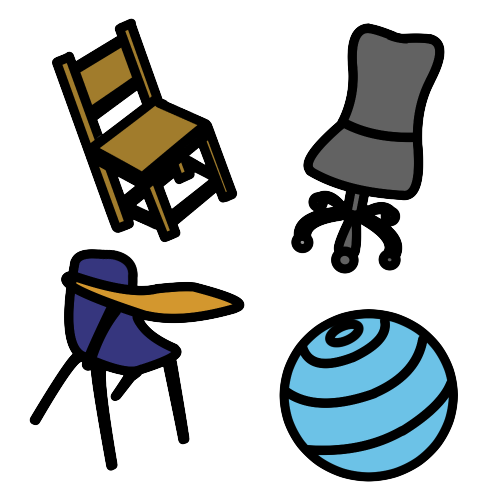We Need More Comfortable Desk Chairs
The quality of people’s environments at work, known scientifically as ergonomics, plays a larger role in a productive environment than the average person can imagine. Lately, companies all over the country have been working tirelessly to ensure their workplaces are ergonomic; however, most people are still foggy on what an ergonomic workplace actually looks like. According to the Centers for Disease Control and Prevention (CDC)’s website (www.cdc.gov), “The goal of ergonomics is to prevent soft tissue injuries and musculoskeletal disorders (MSDs) caused by sudden or sustained exposure to force, vibration, repetitive motion, and awkward posture.”
As posted on the Occupational Safety and Health Administration (OSHA)’s website (www.osha.gov), injuries like “carpal tunnel syndrome, tendinitis rotator cuff injuries (affects the shoulder), epicondylitis (affects the elbow), trigger finger muscle strains, and low back injuries” are the result of MSDs. Ergonomic work environments reduce the risk of MSD-related injuries, which is why companies have been motivated to give their employees the best possible workplace settings. Unfortunately, schools, specifically high schools, have not followed suit and have stuck with the classic connected chair/desk combo that is truly anything but ergonomic.
Schools already have a negative impact on the health of their students, given their troubling schedules. The average student is asked to sit still and listen for most of the seven and a half hours in a school day, not to mention the time students take out of their day to do homework and participate in extracurriculars. This harmful schedule is imposed on students for at least thirteen years, from when they begin kindergarten at the age of five and finally graduate high school at the age of eighteen. In the article “Why Is Sitting So Bad For Us?” on Yale Medicine’s website (www.yalemedicine.org), specialists reported that it is simply not healthy to be sitting for such extended periods of time as it “puts significant stress on spinal structures as well as other joints, such as the shoulders and hips, especially when sitting with poor posture.”
Of course, this issue has only been exacerbated by the chair-desk combos that have spread throughout American high schools like wildfire since their invention in the 1970s. LHS is unfortunately one of these schools. The hard chairs have been a source of many complaints by LHS students, so much so that when asked separately, three students discussed the uncomfortability of the chairs and their negative effects on learning. Sophomore Madison Watson opened up about their personal issues with the current chairs: “I have this condition called fibromyalgia that causes me to have muscle strain and tenderness. When I am sitting in class, I do often feel a lot of discomfort.” Watson added, “Although many other kids also may feel uncomfortable, I feel stress and throbbing on certain pressure points, including my back. It is hard to concentrate when sitting in class. I believe more comfortable chairs would benefit not only me, but other kids who may be sore from a long day.”
Thus, the desk chairs negatively affect students, neglecting potential medical issues as well. Sophomore Chloe Brown added how “the plastic can occasionally dig into my back, which is painful and a distraction,” noting how “something cushioned” would be far more beneficial to the learning environment as it allows students to be “comfortable and focused.” Sophomore Sayge Rolnick reaffirmed how “students are less likely to be distracted by comfortable chairs than by uncomfortable [chair/desk combo] ones.” It is astounding that most current-day students are still made to sit in these painful chairs for most of the school day when standing desks were being introduced in schools as early as the 19th century.
Even though ergonomics has become a popular topic in recent years, the importance of it has been recognized since the 19th century. Dr. Ludwig Wilhelm Johannes Kotelmann wrote his 1899 book entitled School Hygiene, “It has in late years been repeatedly suggested that even with the proper kind of desk, much sitting is liable to injure the abdominal organs and the circulation. Desks have accordingly been proposed which can be arranged for standing as well as sitting. These are hardly necessary for the lower and intermediate classes, since the pupils here rise when questioned, and tumble about vigorously on the playground during recesses. They are rather to be thought of for the upper classes.” Perhaps, schools should yield Kotelmann’s 124-year-old advice and implement these standing desks.
Schools are meant to do everything in their power to ensure that their students receive a proper education; hence, they must begin to make a shift towards standing desks, or at least desks more comfortable than ones that are currently at schools across the country. Staying with the chair/desk combo would simply be irresponsible, as students have attested to it being painful, distracting, and the eventual cause of some health issues that stand in the way of a quality education.

Hi! My name is Paula, and I’m a member of the Class of 2025. Along with managing the Opinions Section, I'm the President of the Culture Club, Co-President...
I am a graphics editor for Horizon and a member of the LHS Class of 2025.


















